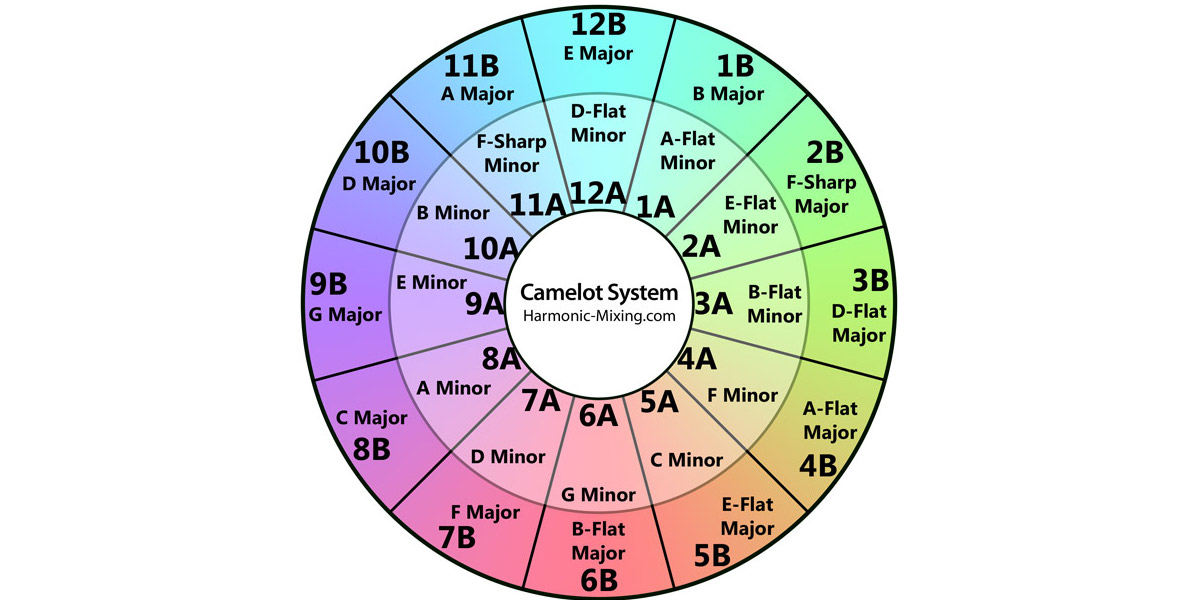When I first discovered keymixing (mixing tracks harmonically, so they were “key synced” as well as “beatmixed”), it was usually by trial and error – because we were mixing with vinyl, which didn’t have the technology built-in to do this.
For instance, you’d find an acapella that worked well with an instrumental, realise there was a musical key match, and guard your rare discovery!
DJs like Sasha and John Digweed made early careers of mixing this way. But when digital arrived, it became possible first to “fix” the key of a track (using “master tempo” or “key lock” controls to keep the pitch the same while altering the tempo), and second to easily know the key of a track (using Mixed In Key software, and then using key detection algorithms built in to DJ software).
Learn to keymix the right way: How To Master Keymixing course
The final piece of the puzzle was the re-imagining of the musical “circle of fifths” (the way the relationship between musical keys is expressed in music theory) as the “Camelot Wheel”. This let DJs with no musical training figure out what tracks in their collection would likely sound good together, simply by following a couple of simple rules.

Now, it was possible to easily and painlessly mix all night long while keeping your DJ set harmonically tuned. It opened the door not only to smoother, more pleasing mixes, but acapella mashups and generally more adventurous DJing.
The downsides of keymixing
But keymixing isn’t a fix for all bad DJing, not by far. There are downsides, and it pays to get the balance right – in other words, to know when NOT to mix in key. So what are those downsides?
- It can be limiting – Mixing strictly in key all the time means that a DJ may fall into the trap of mixing in the next track primarily because it is in the same key or a compatible key, rather than because it is the best track to play. This breaks one of the fundamental rules of DJing, which we define as “playing the right record, for the people in front of you, right now”
- It isn’t always necessary – Mixing in key is only necessary if the two tracks contain musical information in the parts you are mixing together. Musical information is defined as parts that “have” a musical key – melodies, basslines, vocals. If the track or tracks you are transitioning have only drums at those parts, frankly you gain nothing by checking they are in key
- Modern “key sync” features can trip DJs up, big style – Many systems have a button that will “match” your tracks – but they “move” they key so far up or down that the matched track sounds ridiculous. And yet DJs still use them, thinking that just because the tracks are now in key, it is a good transition (wrong!)
- Mixing in key all night is often just… boring – Turns out that audiences don’t mind key changes, as long as the tracks are programmed so there are not out-of-key overlapping musical elements. Key changes are like punctuation in a set, a fresh breath, a corner turned. They add space, and fun. They’re exciting!
Read this next: The Ultimate Guide To Keymixing For DJs
So what is the right approach?
So what is a DJ to do? There are two rules that can help you get this right. The best practices here are:
- Treat keymixing as a tool not a rule – Mix in key if the opportunity presents itself, but find another way to mix in a new track if it doesn’t – a way that gives you the chance to pay the track you know is right rather than one you know is in key
- Trust your ears – if it sounds rubbish, it is rubbish. Don’t think because a mix is in key that it is automatically good. Keymixing is just a small part of a successful transition
Maybe the words of our tutor Laidback Luke sum it up best: “If it’s in key, I mix slowly. If it isn’t, I mix fast!”
Do you rely on keymixing? Or do you never use it? Do you feel you may have over-used it in the past, or do you think you have the balance right? Let us know in the comments!




